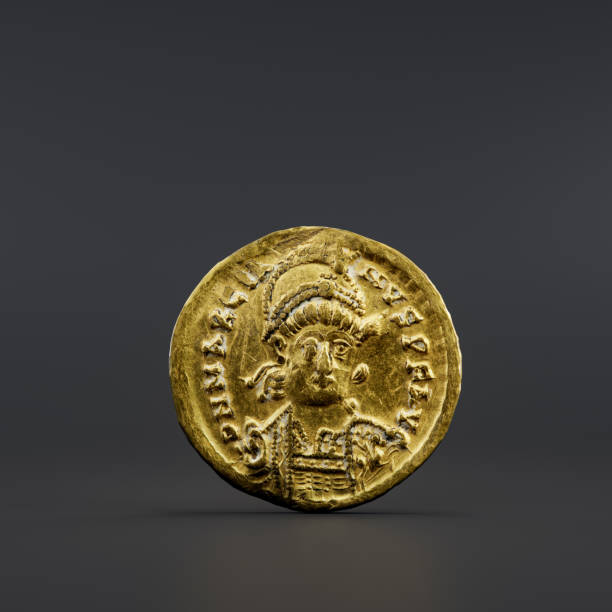After the fall of the Western Roman Empire in 476 CE, much of Europe descended into economic fragmentation, with gold coinage disappearing from circulation. However, in the East, the Eastern Roman (Byzantine) Empire remained strong, preserving its centralized economy and monetary system. At the heart of this stability was the Byzantine Solidus, a gold coin introduced by Emperor Constantine the Great in the 4th century. Unlike Western currencies, which suffered from debasement and decline, the Solidus maintained its gold purity for centuries, becoming the standard currency for trade, diplomacy, and military payments across Europe, the Mediterranean, and beyond.

The Rise of the Solidus under Constantine (4th Century CE)
While the Western Roman Empire fell in 476 CE, its monetary legacy did not disappear. Instead, gold coinage found new life in the Eastern Roman Empire (Byzantium), where the Solidus, introduced by Emperor Constantine the Great in 312 CE, became the most trusted gold currency for nearly 700 years.
Constantine established the Solidus to replace the Aureus, Rome’s previous gold coin, which had suffered from gradual debasement (reduction in gold content). The Solidus, by contrast, maintained an exceptionally high gold purity (about 95–98%), ensuring its stability and long-term value. This made it the foundation of the Byzantine economy and the most widely used gold coin in Europe and the Mediterranean.
Why Did the Solidus Survive While Western Gold Coins Declined?
After the collapse of the Western Roman Empire, Europe faced economic fragmentation. Gold coin production declined in the West as local economies shifted toward silver and barter systems. However, the Eastern Roman (Byzantine) Empire remained politically stable, allowing it to preserve a strong centralized economy and gold-backed monetary system. The key reasons for the Solidus’ survival included:
- Political and Economic Stability in Byzantium – Unlike the West, Byzantium retained a functioning administration and tax system, supporting continued gold coinage.
- Reliable Gold Content – The Solidus was not debased over centuries, unlike many Western coins that lost value.
- Strategic Trade Position – Byzantium controlled key trade routes between Europe, the Middle East, and Asia, ensuring a steady flow of gold.
- Military and Diplomatic Influence – The Byzantine Empire paid its soldiers, allies, and even enemies in Solidus coins, reinforcing its dominance.
The Solidus as an International Currency (5th–8th Century CE)
The Solidus became the most respected and widely circulated gold coin in the medieval world. It was used far beyond Byzantium’s borders, influencing economies in:
- Western Europe – Germanic kingdoms like the Ostrogoths and Visigoths initially imitated Byzantine gold coinage before shifting to silver.
- The Islamic World – Early Islamic economies used the Solidus before creating the gold dinar in 696 CE.
- Central Asia and the Silk Road – Byzantine gold coins were found in Persia, India, and China, demonstrating their reach.
The Legacy of the Solidus
The Solidus remained Byzantium’s primary gold coin until the 11th century, when it was replaced by the Hyperpyron. Its legacy, however, continued to shape medieval European gold coinage, inspiring later coins like the Florin (1252) and Ducat (1284).
Conclusion: The Solidus Kept Gold Alive
While gold coin circulation collapsed in the West after Rome’s fall, the Byzantine Solidus ensured the survival of a gold-based economy in Europe and the Mediterranean. Its stability, widespread use, and lasting influence made it one of the most important gold coins in history.
